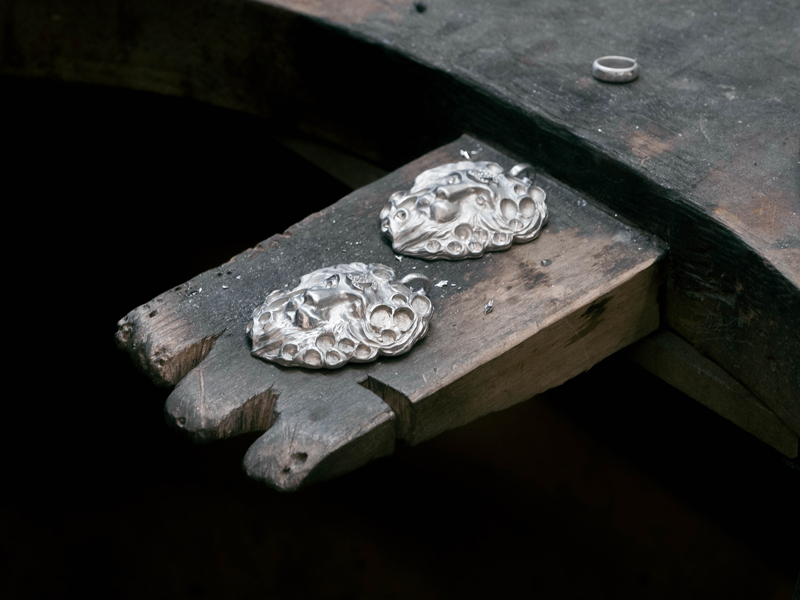On 6 December 2022, Chanel unveiled its first showing in Africa. Hosted at the former Palais de Justice in Dakar, the capital of Senegal, the French maison revealed its vision for its 2022/23 Métiers d’art collection under the creative orchestration of Virginie Viard. The show, Viard shared, was three years in the making. And with the fog of the pandemic rising, it seemed like the perfect time to explore a newfound jubilance in a continent so widely revered for its creativity, heart and ingenuity.
To the uninitiated, Chanel’s Métiers d’art—which translates to master of art—collection is a dedicated line-up that showcases pieces that have been designed utilising techniques of rare and revered craftsmanship. Straddling the line of ready-to-wear and haute couture, the Métiers d’art line-up is a homage to the maison’s exquisite savoir-faire. It is also a nod to its extensive ateliers and dedicated artisans across Lemarie, Maison Michel, Lesage, Atelier Montex, Goossens and Ateliers Lognon. As initiated by Karl Lagerfeld, each Métiers d’art show has been hosted in a different location, from Paris and Rome to Monte Carlos and Shanghai. The latest city to unveil the one-of-a-kind collection is Tokyo, Japan, which hosted a replica of the maison’s history-making show in Senegal.

On Viard’s drawing board was the spirit of the ’70s, particularly the decades of pop soul, funk, disco and punk. Since her appointment in 2019, the artistic director’s motto has been one that prioritises the meeting of worlds. This was evident in the show’s assortment of liveliness. The colour palette proved refreshing, bound together by rich forest greens, swirly oranges, pops of pink and well-timed denim. It was a considered exercise in weaving Senegal’s heritage with that of Chanel’s (rooted in France but intrinsically global) motifs such as the unmistakable camellia and Senegal’s national emblem of the lion. Delicate and draped pearls as well as platform, commando shoes accompanied silhouettes both hyper-feminine—jackets, for example, set atop bare chests—and masculine, as seen with the tailored silhouettes of the pieces. A fraction of the beading use was also sourced in Africa, an element that stayed unchanged even in the reshowing in Japan.


A key element in Chanel’s Métiers d’art collections is its work with its ateliers. Atelier Montex, for example, is one of the maison’s resident embroiderers. Founded in 1939, it is profiled by its distinct technique. Combined with the expertise of artistic director Annie Trussart, the establishment has become synonymous with luxury brands all over the world. In 2017, Trussart handed over the reins to Aska Yamashita, and in 2021, the key pillar of Chanel’s Métiers d’arts collections moved to Chanel 19M, a hub for the maison’s speciality creators. “For six years now, I have been the artistic director of Atelier Montex. I work on all the relationships with the clients, artistic directors of the houses we work with and with the team to follow the realisation of the prototypes for each collection. I work side by side with the team, telling them to go this way, maybe go with this colour and so on. It’s just to be close to them and accompany them to the final effect I want and that the client will love,” shares Yamashita. Having worked with Trussart and the Chanel-owned embroiderer for over two decades, Yamashita has developed an intrinsic understanding of the maison’s design language as well as the significance of its Métiers d’art collections.
“It’s special because Chanel highlights different design houses. It’s a recognition of our work.”
“For us, it’s special because Chanel decides to highlight different design houses. So it’s a very important collection for all of us, a real pleasure and recognition of our work. This collection was so amazing,” shares Yamashita when asked about her thoughts on Chanel’s 2022/2023 Métiers d’art show. Highlighting one of the maison’s other key embroiderers, she adds: “I really love the Lesage embroideries and I like how everything is mixed together. The first look with the trousers was so ’70s. I also loved the shoes. It’s all very colourful. I work with colour so I really like it.”

Touching on the heritage aspect of the Métiers d’art collections, Yamashita also delves into creating pieces that resonate with a younger audience, both as customers as well as artisans. “It’s easier to find young people now willing to work in Maison d’arts and it was a long time ago when I started,” she reveals. “This is due to the fact that there is an ongoing highlight of our work and our jobs which values our work. It has changed a lot. When I arrived, it was a small team and it’s now a huge workshop. That is a huge evolution.”
For more stories like this, subscribe to the print edition of Vogue Singapore.





